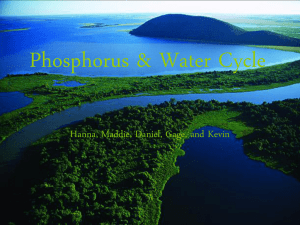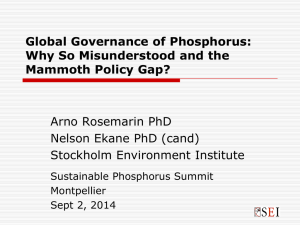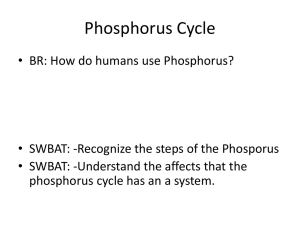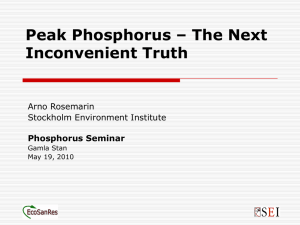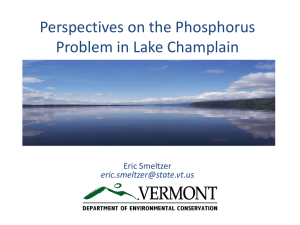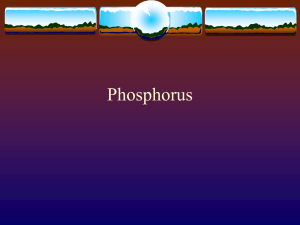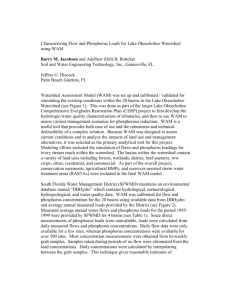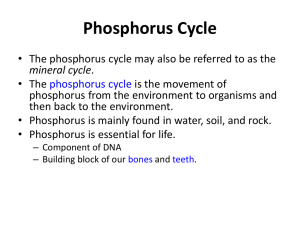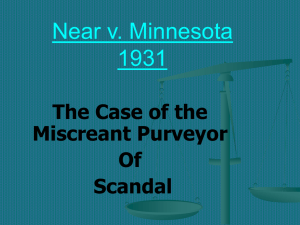Phosphorus Loads to Surface Waters in the Minnesota River Basin
advertisement
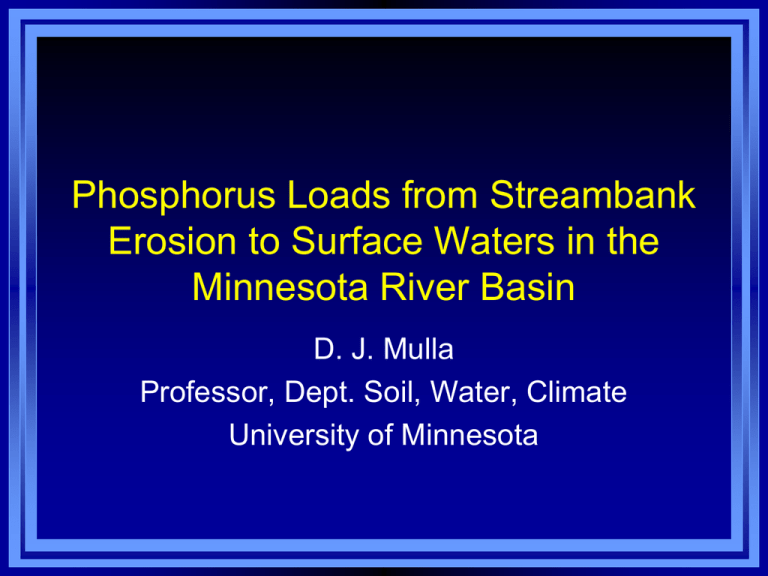
Phosphorus Loads from Streambank Erosion to Surface Waters in the Minnesota River Basin D. J. Mulla Professor, Dept. Soil, Water, Climate University of Minnesota Minnesota River Basin Pollution l l l l l One of the twenty most threatened rivers in the nation (flow, sediment, nitrogen, phosphorus, and bacteria) P loads vary among tributaries Sources of P pollution diverse Serious impacts on Lake Pepin TMDL for a 40% reduction in BOD in the Lower Minnesota River, goal for a TP concentration of 0.17 mg/L, nearly half of current levels Assessment of P Sources to Surface Waters Study (2005) l Determine phosphorus contributions to surface waters within each of the ten major Minnesota drainage basins – Point and Nonpoint Sources – Low, Average, and High Flow Conditions l Identification of phosphorus sources and the amounts entering POTW’s by – Size (flow rates) – Category (household, commercial and industrial) l Determine the amount of bio-available P from all point and nonpoint sources Science Based Approach l l l Birr, A. S. and D. J. Mulla. 2001. Evaluation of phosphorus site index in watersheds at the regional scale. J. Environ. Quality. 30:2018-2025. Fang, F., P. L. Brezonik, D. J. Mulla, and L. K. Hatch. 2002. Estimating runoff phosphorus losses from calcareous soils in the Minnesota River Basin. J. Environ. Quality 31(6):1918-1929. Fang, F., P. L. Brezonik, D. J. Mulla, and L. K. Hatch. 2005. Characterization of soil bioavailable phosphorus in the Minnesota River basin. Soil Sci. Soc. Am. J. 69:1016-1025. Minnesota River Slumping River Bluffs Phosphorus Contributions from Streambank Erosion l Total P load from streambanks calculated using subsoil phosphorus concentrations (441 mg kg-1) and streambank erosion estimates (44% of total sediment load) l Sekely, A. C., D. J. Mulla, and D. W. Bauer. 2002. Streambank slumping and its contribution to the phosphorus and suspended sediment loads of the Blue Earth River, Minnesota. J. Soil Water Conservation. 57(5):243-250. Minnesota River Tributary TP Loads Nonpoint Sources of Phosphorus l l Transported to surface waters by overland flow and erosion, mainly from soils that are in close proximity to water Occurs in two forms: – Particulate P in eroded sediment – Soluble P in runoff l Most important sources: – – – – Water erosion and runoff (snowmelt, rain) Streambank erosion Tile drainage Atmospheric deposition (wind erosion) Point Sources of Phosphorus l l Generally more bio-available than nonpoint sources of phosphorus Most important sources: – – – – l Commercial/Industrial Process water Wastewater treatment plants Food waste and garbage disposal waste Dishwasher detergents Example: Redwood watershed – Over 75% of TP in watershed is from Archer Daniels processing plant and Marshall wastewater treatment plant Conclusions l l l l Target watersheds that transport the largest TP loads Target the largest sources of TP Streambanks are an important source of TP loading to surface waters in areas with slumping stream bluffs Both point and nonpoint source reductions are important Thank You

